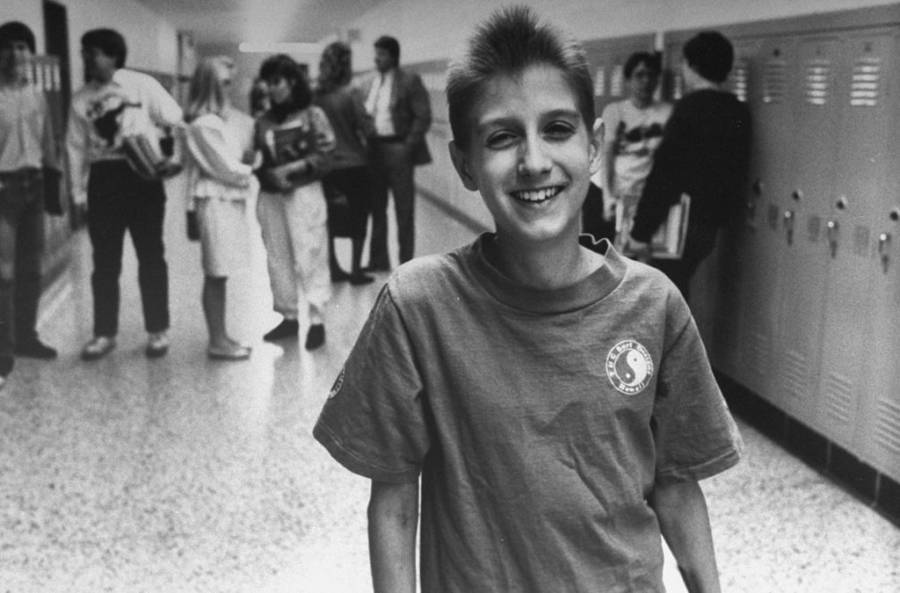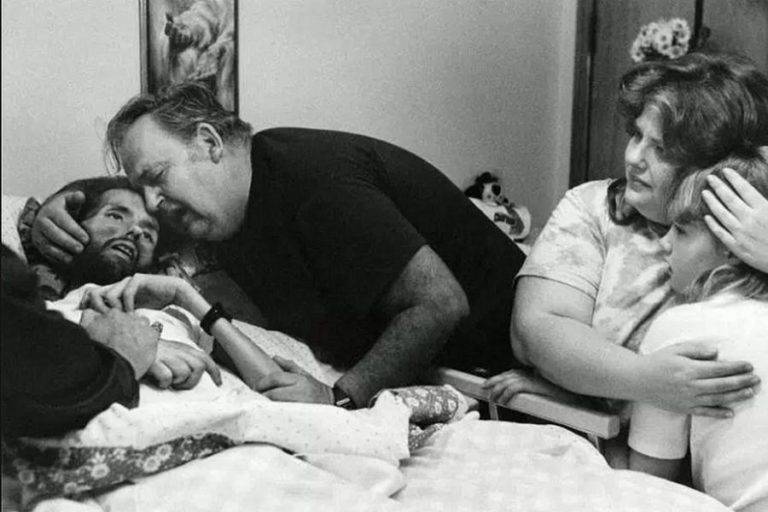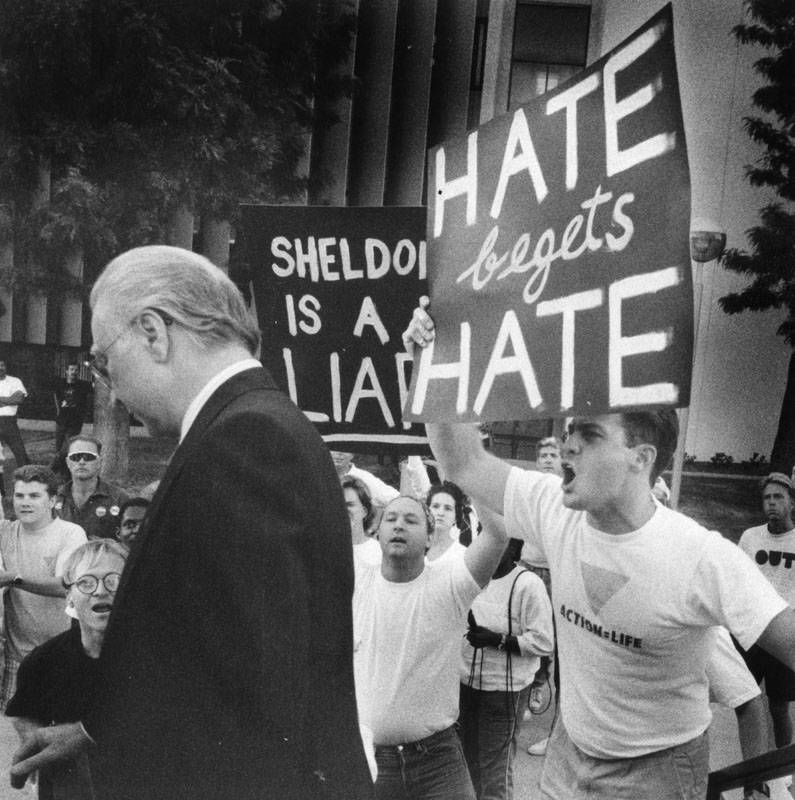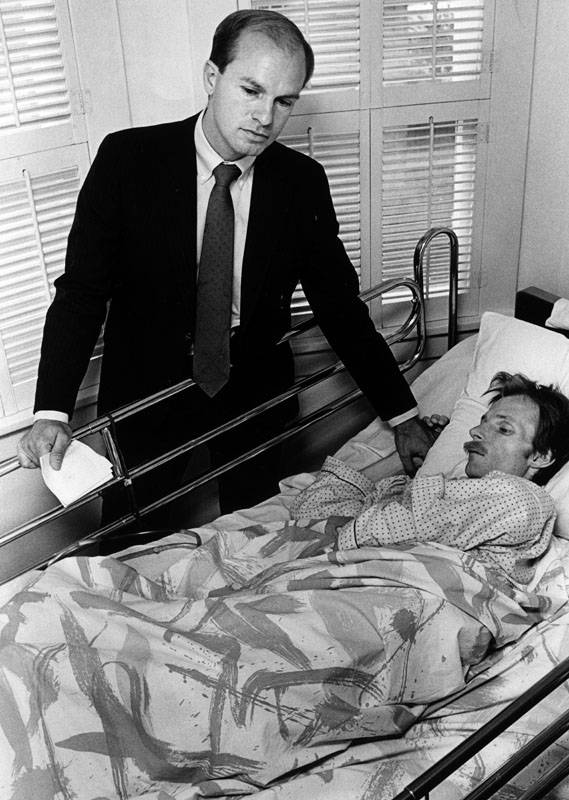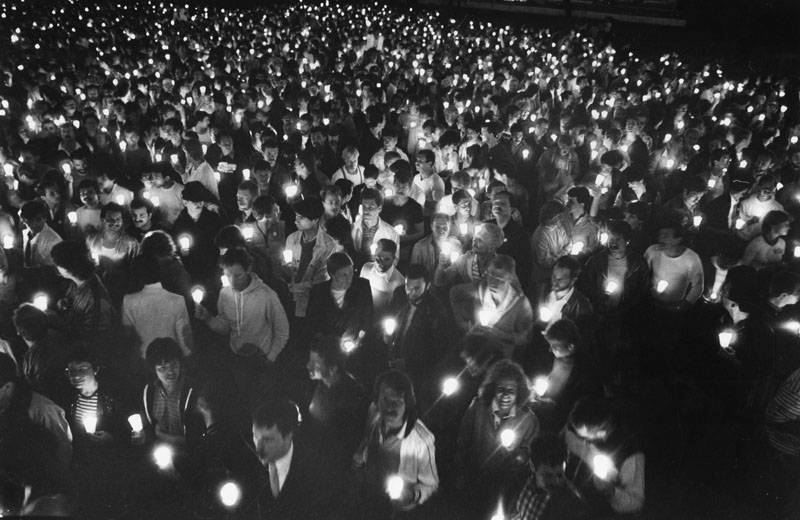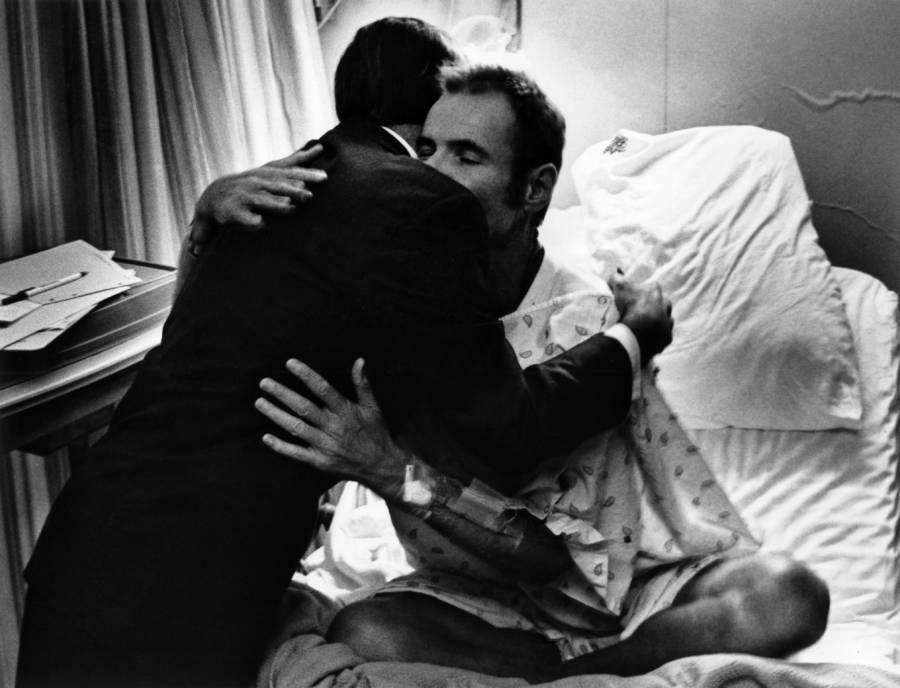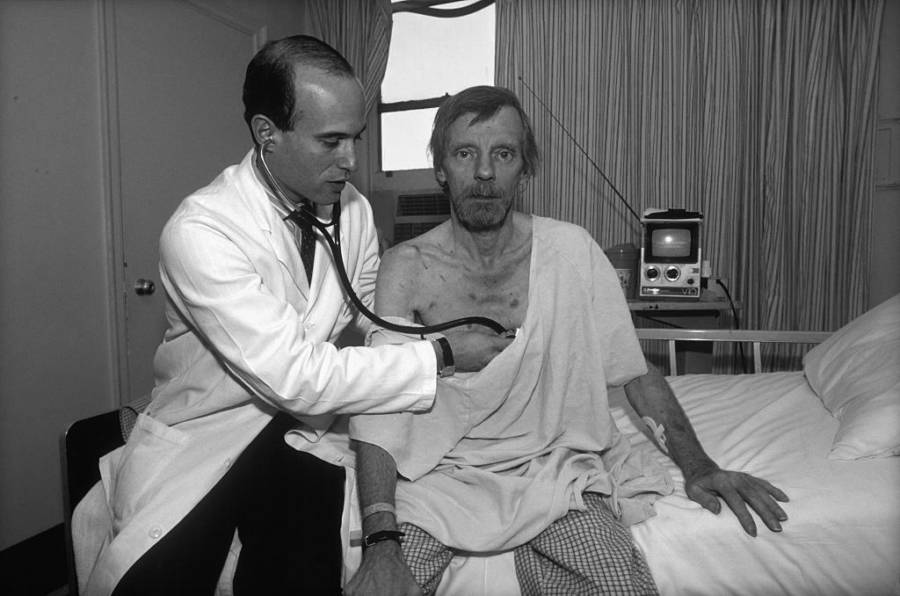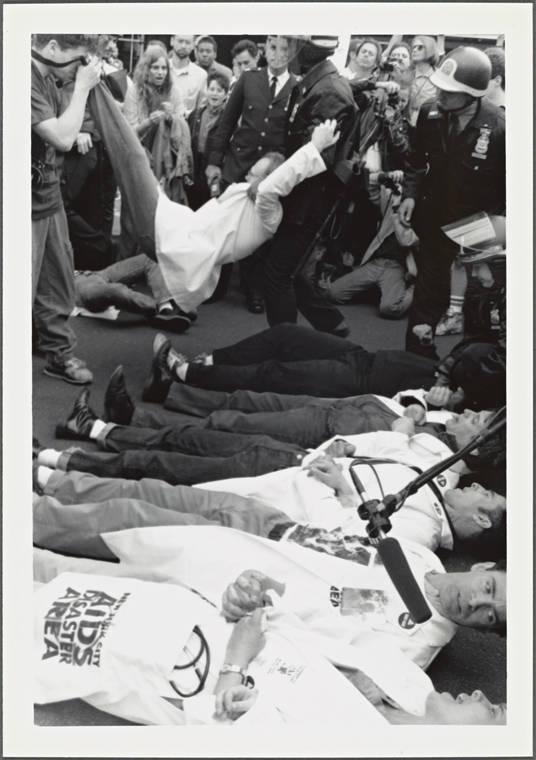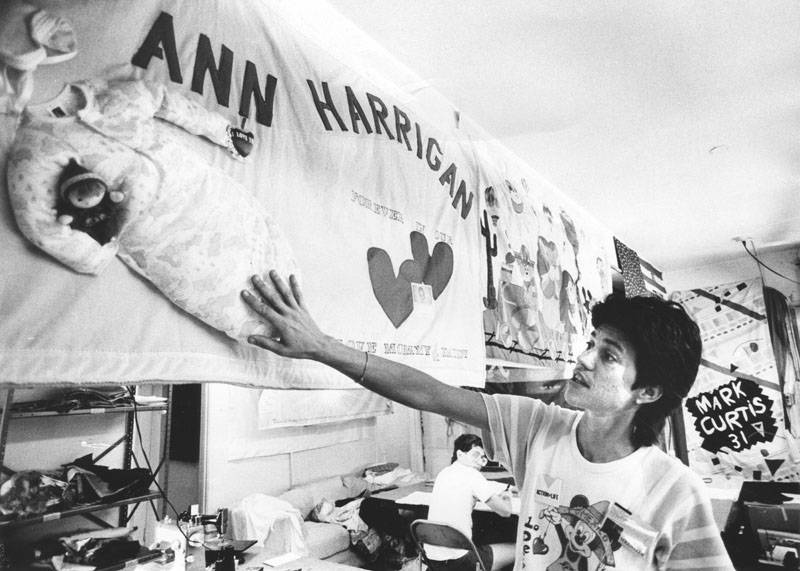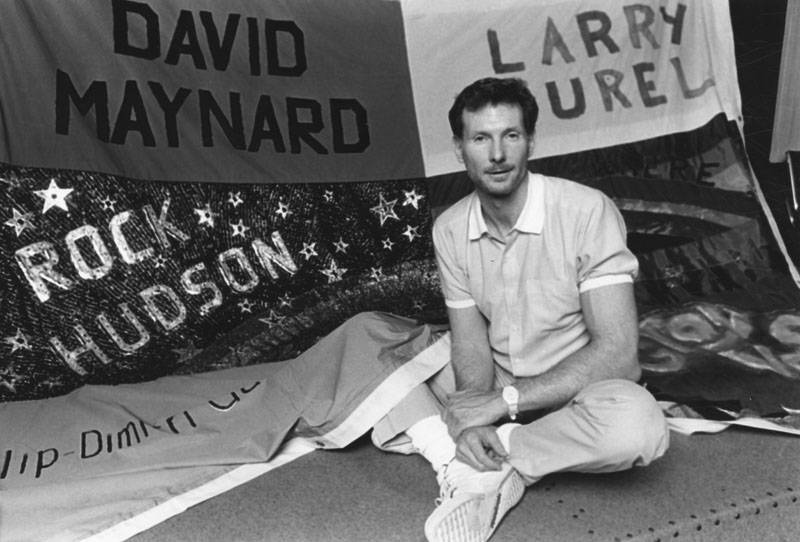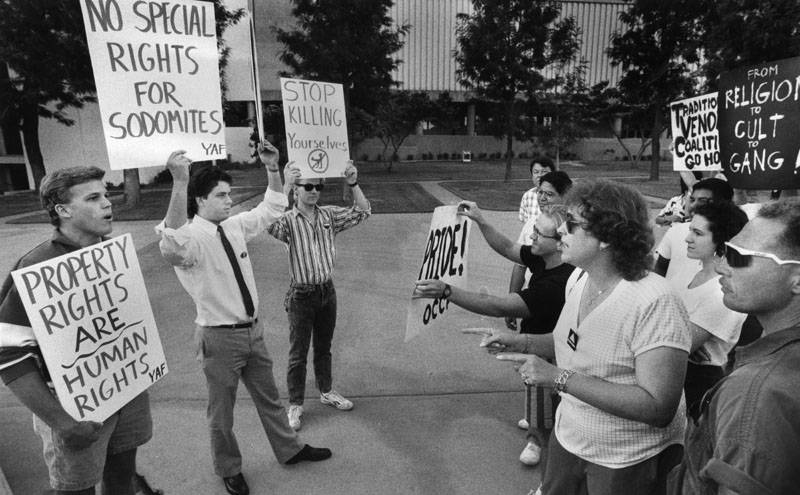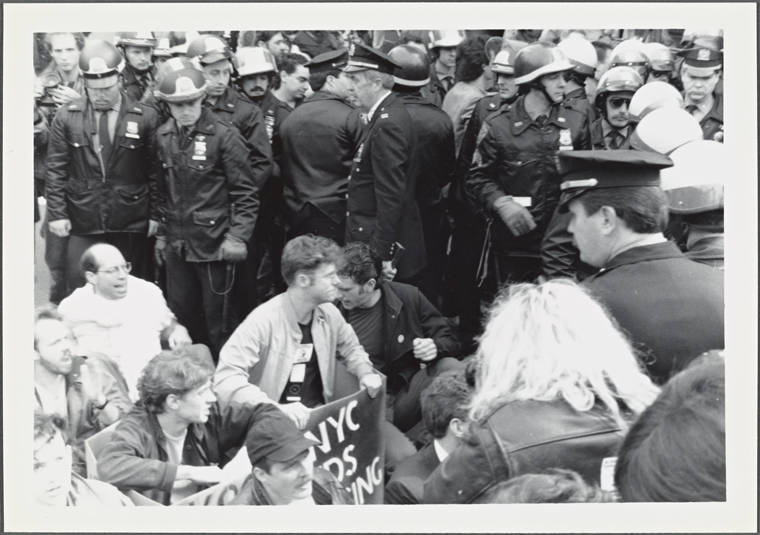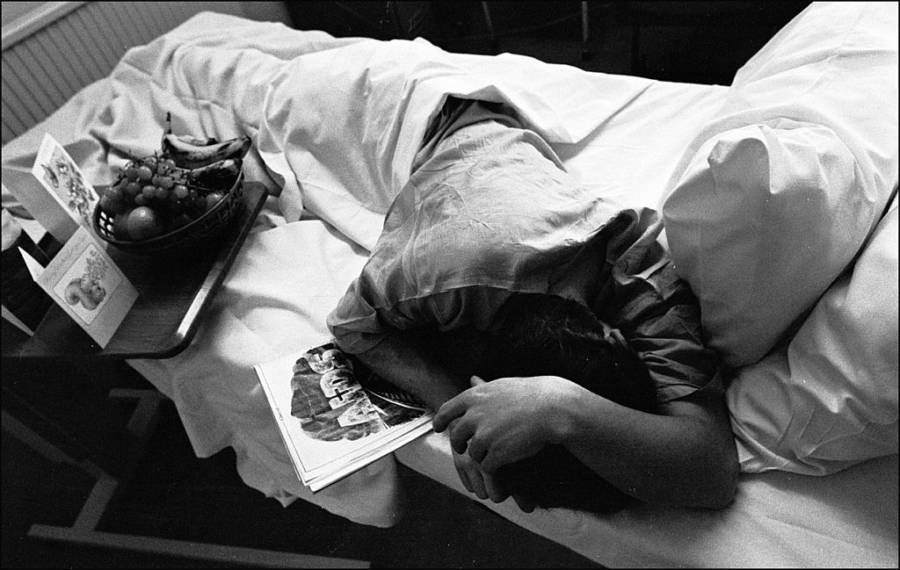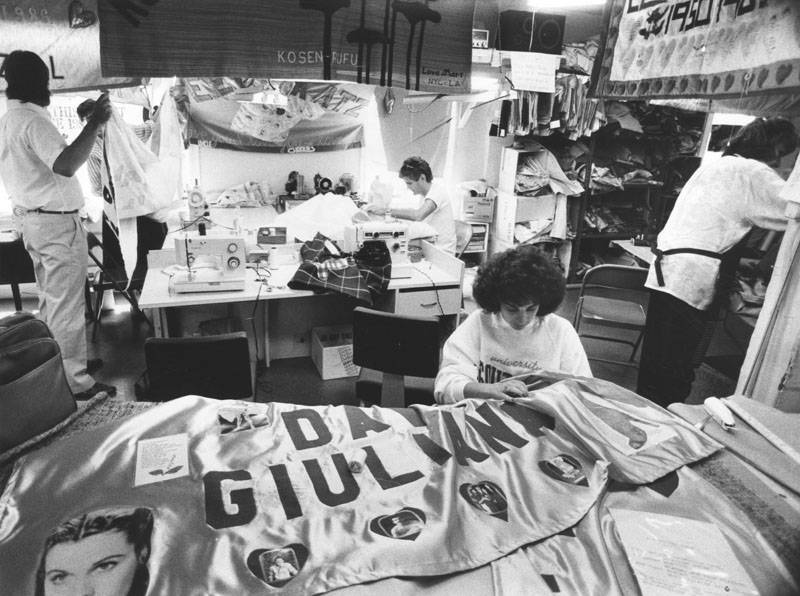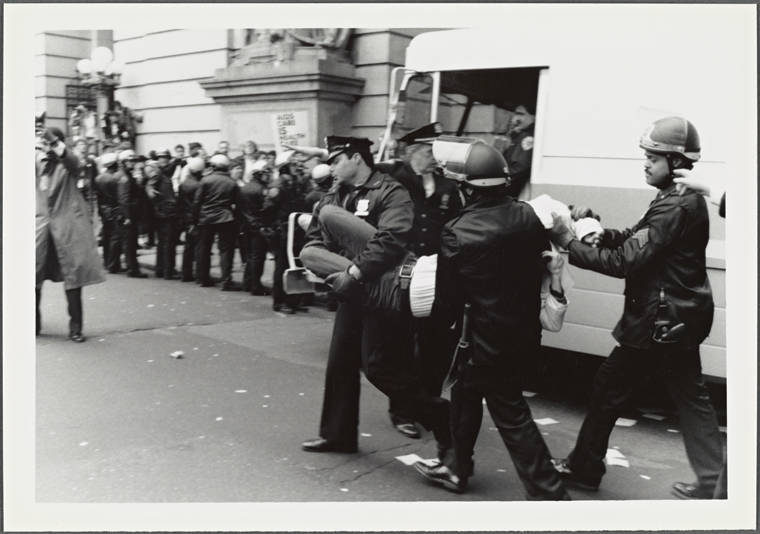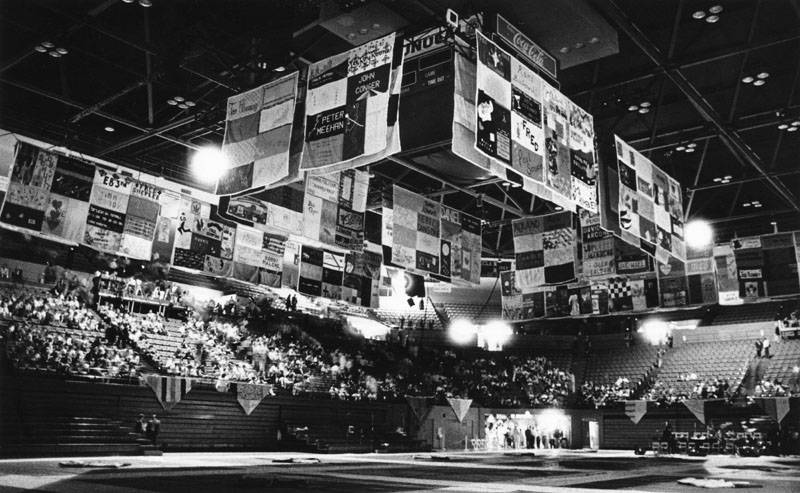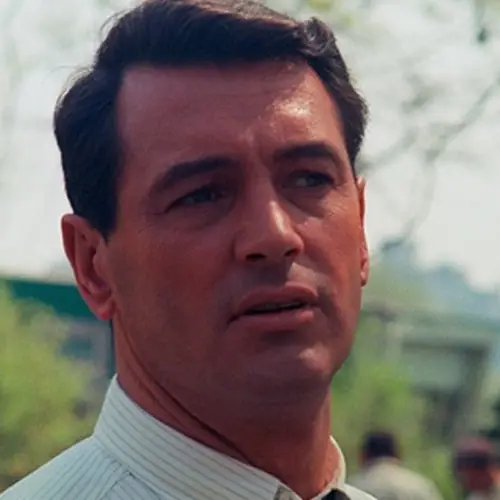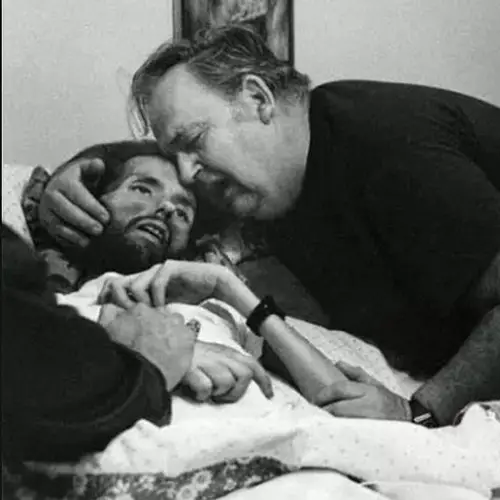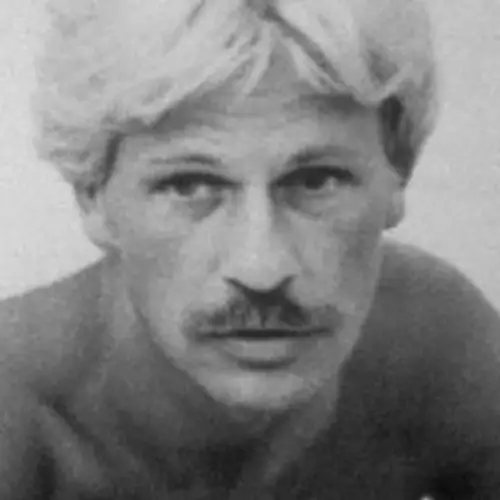1 of 31
Ida Jones wraps her arms around her son, Ryland, who is slowly dying of AIDS.
Ryland Jones told the photographer that he planned on killing himself with barbiturates rather than let the disease take him.
San Francisco, California. September 17, 1991.John Storey/The LIFE Images Collection/Getty Images
2 of 31
16-year-old AIDS patient Ryan White at his new school.
Ryan White had to leave his last school because the administration refused to let him attend. They were afraid that his condition was a threat to the other kids.
Indiana. January 1, 1987.Taro Yamasaki/The LIFE Images Collection/Getty Images
3 of 31
David Kirby's father holds his son's head tight for one of the last times before AIDS will steal the young man away.
Ohio. November, 1990. Therese Frare
4 of 31
An AIDS activist holds up a sign protesting the decision to overturn an anti-discrimination law.
Orange County, California. June 20, 1989.Los Angeles Public Library
5 of 31
Two men fighting for the rights of AIDS victims embrace.
Orange County, California. June 20, 1989. Los Angeles Public Library
6 of 31
Hospice Director Ron Wolff checks on John Ryan, a patient who is not expected to survive his battle with the disease.
Los Angeles, California. February 16, 1988.Los Angeles Public Library
7 of 31
A crowd of 2,000 gathers for a candlelight vigil to those who have been lost to the AIDS epidemic.
Los Angeles, California. May 30, 1987.Los Angeles Public Library
8 of 31
Peta, an AIDS patient famous for his relationship with another famously photographed AIDS victim, David Kirby.
Ohio. 1992.Therese Frare
9 of 31
16-year-old AIDS patient Ryan White is examined by a doctor.
White, a hemophiliac, contracted AIDS from a contaminated supply of the Factor VIII protein he'd been injected with to treat his condition.
Indianapolis, Indiana. February 20, 1990.Taro Yamasaki/The LIFE Images Collection/Getty Images
10 of 31
One of the last photos ever taken of AIDS victim David Kirby.
Ohio. November, 1990. Therese Frare
11 of 31
Dr. Richard DiGioia hugs his patient, Tom Kane.
Washington, D.C. September 25, 1992Bettmann/Getty Images
12 of 31
A man arguing with AIDS activists holds up the Holy Bible in his defense.
Orange County, California. June 20, 1989.Los Angeles Public Library
13 of 31
An AIDS patient is examined by a doctor.
New York, New York, December 10, 1986.Allan Tannenbaum/Getty Images
14 of 31
AIDS patient Evelyne N., mother of three boys, flexes for the camera at St. Clare's Hospital.
New York, New York. October 12, 1986.Allan Tannenbaum/Getty Images
15 of 31
A man marches in a candlelight vigil for those lost to the AIDS epidemic.
Los Angeles, California. May 30, 1987.Los Angeles Public Library
16 of 31
Police officers drag away activists of the ACT UP coalition who'd been protesting outside of City Hall.
New York, New York. March 28, 1989.New York Public Library
17 of 31
A woman points out the name "Terrie Ann Harrigan," sewed into the quilt in memory of her loss.
Harrigan was seven months old when she contracted AIDS from a blood transfusion.
Los Angeles, California. April 15, 1988.Los Angeles Public Library
18 of 31
Activists take the first steps in a walkathon to raise funds for AIDS research.
Los Angeles, California. July 29, 1985.Los Angeles Public Library
19 of 31
Lenny Mendez stitches the name of a friend lost to AIDS onto the quilt.
Los Angeles, California. April 8, 1988.Los Angeles Public Library
20 of 31
A volunteer helping out at St. Clare's Hospital serves dinners to AIDS patient Paul Keenan.
New York, New York. 1986.NY Daily News via Getty Images
21 of 31
Matt Redman, the head of the National AIDS Quilt project.
Los Angeles, California. April 8, 1988.Los Angeles Public Library
22 of 31
AIDS-rights supporters and the religious right clash on the streets of California.
Orange County, California. June 20, 1989.Los Angeles Public Library
23 of 31
A team of police officers gather, keeping their eye on the protesters fighting for AIDS rights.
New York, New York. March 28, 1989.New York Public Library
24 of 31
A patient, overcome with despair, hides his head in the hospital sheets.
Paddington, United Kingdom. 1985.Michael Ward/Getty Images
25 of 31
A team works at sewing the names of loved ones who have been lost to AIDS onto one massive quilt.
Los Angeles, California. April 8, 1988.Los Angeles Public Library
26 of 31
Police officers drag away an ACT UP protester in front of City Hall.
Of the 3,000 people who attended this protest, 200 were arrested.
New York, New York. March 28, 1989.New York Public Library
27 of 31
The completed Aids Memorial Quilt hangs from the ceiling at the UCLA Campus.
800 volunteers contributed to the quilt. By the time it was done, it listed so many names that the quilt weighed seven tons.
Los Angeles, California. April 1988.Los Angeles Public Library
28 of 31
Ryan White's empty hospital bed shortly after the disease ate away his life.
Indiana, USA. February 20, 1990.Taro Yamasaki/The LIFE Images Collection/Getty Images
29 of 31
Years losing her son David to AIDS, Kay Kirby tends to his friend Peta, suffering from the same illness as her son.
Ohio. 1992.Therese Frare
30 of 31
The AIDS Memorial Quilt, listing the names of those lost, on display in the nation's capital.
Washington, D.C.. April, 1988. Los Angeles Public Library
31 of 31
Like this gallery?
Share it:

